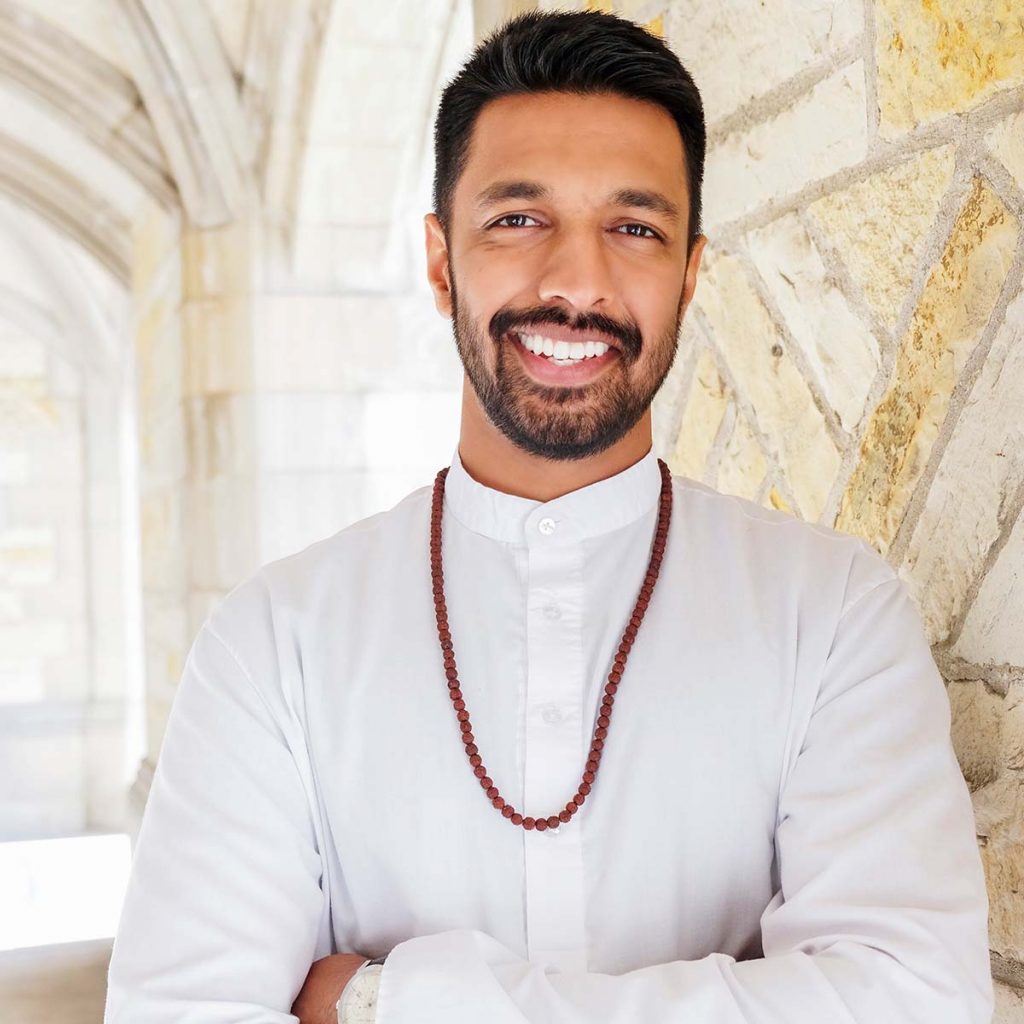Let’s define our religion by the personal experiences we cull from our spiritual pursuits
By Amar Shah


In December 1951, in Pune, India, a young sannyasin by the name of Chinmayananda publicly declared an audacious observation: Hinduism, as practiced in recent centuries, had fallen severely. “No doubt,” he said, “in India, Hinduism has come to mean nothing more than a bundle of sacred superstitions, or a certain way of dressing, cooking, eating, talking, and so on.” He exhorted his audience to study, understand and then live the values advocated by our ancient and sacred religion as consistently as possible. “Let us be Hindus!” he encouraged.
Driven by curiosity and the information age, Hindu knowledge spread across the world, increasing accessibility to its profound forms of self-development. Today, our social media apps are filled with Bhagavad Gita soundbites, shareable quotes and Hindu activist posts. We sift through our newsfeeds at a breakneck pace, and continue to “like,” “share” and “subscribe” with a few taps of a finger. However, behind the keyboards and forums, tucked away in the furthest parts of the home, I’ve seen many altars remaining untouched, gathering dust. How many of us actually practice what we post? Now 70 years later, Chinmayananda’s call to action of “Let us be Hindus” must be sounded once again.
I posit that being Hindu has two fundamental requirements. First, a reverence of Vedas as a legitimate source of knowledge, and second, an active adherence to the Vedic goal of self-improvement and liberation via daily sadhana (spiritual practice). With these in mind, I dare ask the reader a question: “Do you actually practice Hinduism?” Without personal practice, this shared knowledge–however global–becomes nothing more than dry philosophy to stagnate in the archives of our minds alongside YouTube cat clips, sports highlights and celebrity memes. In this sense, we run a danger of redefining being “Hindu” as simply a sharing of religious content, celebrating one-off, photo-op holidays, and online activism. What is the use if knowledge is not applied in the pursuit of self-development and the Divine? What is the use, if we are Hindu in name only?
May we become practicing Hindus! The sadhanas available to us are manifold and multifaceted to suit our innumerable personalities: puja (physical and mental worship), japa (repetition of mantras), dhyana (meditation) and svadhyaya (self-study) are a few that come to mind. As my guru has so nicely put it–the array of Hindu sadhana “is like a buffet!” Just as South Indians will naturally gravitate toward fresh idli, and Northerners will eye the paneer-laden gravies, we all have natural compatibility with different sadhanas. With such a variety available, we must pick up at least one practice, sharpen ourselves, and speak from the depths of self-experience. Without sadhana, our online advocacy, philosophical debates and content sharing will remain relatively ineffective or even detrimental.
Let me be clear, however, that such current efforts to be Hindu are not entirely without merit. Indeed, the bhava (feeling/intention) powering our young people is quite righteous and well-spirited! These efforts indicate needs for cultural and spiritual wellness, a sense of community, and an ability to be Hindu without fear of prejudice or persecution. Beginning with our colleges and universities, we must establish arenas of satsang (spiritual discourse) wherein sadhana can be practiced and experiences can be shared, all with careful guidance by formally trained teachers. My position at Northwestern University is a manifestation of students rallying to study scripture and practice sadhana. In the future, I plan to share insights about how we are fostering such a community as I step in as the university’s first Hindu Chaplain.
Amar Shah, a Chicago native, is a corporate speaker with monastic training in Vedanta. He is the inaugural Hindu Chaplain at Northwestern University. See amarshah.com, or Instagram @therealamarshah


